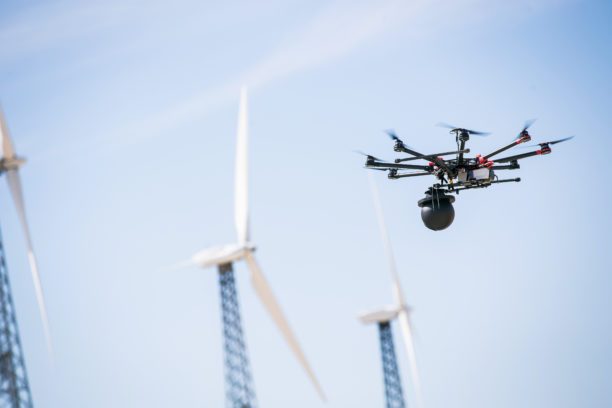
Kevin Wells, Chief Strategy Officer and CMO at AirFusion, says that the company set out to solve an obvious problem for alternative energy firms. Inspections could be performed, but translating them into actionable data that actually saved money was more difficult. “Inspection reports used to end up in a 3-ring binder on some engineer’s desk,” says Wells. “There can be a total lack of integration into the organization’s maintenance planning or management.”
The AirFusion solution takes those inspection images and uses AI technology to detect and categorize blade damage. The beauty of the system is not only in its capability, but its speed. The drone agnostic platform provides an automatic upload of images to the cloud, where the system can generate a report on an entire wind turbine in about 30 seconds. Designed for licensed drone service providers, the system provides an elegant login for the end client to allow them to view and manipulate the data. While there is always a human expert involved to take the finished data, the company says that the analysis provided by AirFusion software saves over 90% of the time that it would take an expert to sift through the images and generate the report by hand.
The next step – which AirFusion expects to release in Q2 or Q3 – takes the analysis one giant step further. With the damage identified and categorized, by applying sophisticated algorithms to the data the software is able to predict impact and prioritize work. AirFusion can generate reports predicting that blade damage is slowing production by 2%, for example: another type of damage might represent a significant risk to the operation. It’s a CFO’s dream, and a major improvement over guesswork or investing in only the most obvious or urgent repairs.
“These repairs are expensive,” says Wells. “When you decide to repair something, you need to understand what will happen if you do – or if you don’t. When the operations manager logs in in the morning, he needs to be able to understand what the priorities are and how best to optimize the operation.”
It’s a complex problem, but one handled well by powerful computing. “Two of the most critical questions for operations managers are: What is the most profitable repair for you to make today? What’s the most expensive repair for you to ignore today?” Wells says. “That’s extremely sophisticated software – and extremely valuable.”
Miriam McNabb is the Editor-in-Chief of DRONELIFE and CEO of JobForDrones, a professional drone services marketplace, and a fascinated observer of the emerging drone industry and the regulatory environment for drones. Miriam has penned over 3,000 articles focused on the commercial drone space and is an international speaker and recognized figure in the industry. Miriam has a degree from the University of Chicago and over 20 years of experience in high tech sales and marketing for new technologies.
For drone industry consulting or writing, Email Miriam.
TWITTER:@spaldingbarker
Subscribe to DroneLife here.
